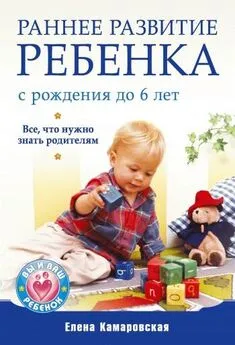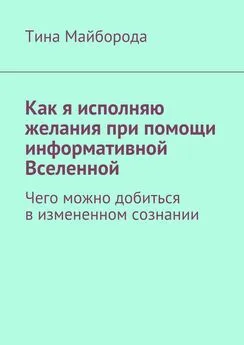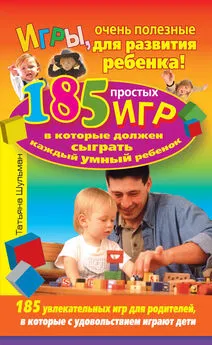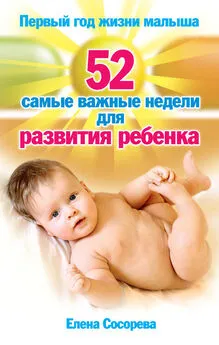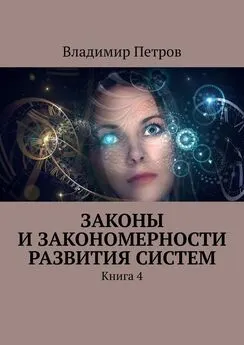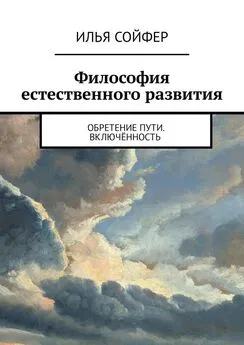Селин Альварес - Законы естественного развития ребенка, или Каких успехов можно добиться, если просто их знать
- Название:Законы естественного развития ребенка, или Каких успехов можно добиться, если просто их знать
- Автор:
- Жанр:
- Издательство:Эксмо
- Год:2018
- Город:М.
- ISBN:978-5-04-092460-8
- Рейтинг:
- Избранное:Добавить в избранное
-
Отзывы:
-
Ваша оценка:
Селин Альварес - Законы естественного развития ребенка, или Каких успехов можно добиться, если просто их знать краткое содержание
Законы естественного развития ребенка, или Каких успехов можно добиться, если просто их знать - читать онлайн бесплатно ознакомительный отрывок
Интервал:
Закладка:
Waldinger, R. (2016), «What Makes a Good Life? Lessons From the Longest Study on Happiness», TEDxBeaconStreet.
Waldinger, R., «The Study of Adult Development, Harvard Second Generation Study». Voir: http://www.adultdevelopmentstudy.org
Wallace, J.-B. (13 марта 2015 г.), «Why Children Needs Chores», The Wall Street Journal (он-лайн).
Warneken, F. (2013), «Young Children Proactively Remedy Unnoticed Accidents», Cognition, 126, (1), стр. 101–108.
Warneken, F. (2014), «The Roots of Empathy», межлународный коллоквиум Heart-Mind.
Warneken, F., Hare, B., Melis, A. P., Hanus, D. & Tomasello, M. (2007), «Spontaneous Altruism by Chimpanzees and Young Children», PLoS Biology, 5, (7), стр. 1414–1420.
Warneken, F., Tomasello, M. (2006), «Altruistic Helping in Human Infants and Young Chimpanzees», Science, 311, стр. 1301–1303.
Warneken, F., Tomasello, M. (2007), «Helping and Cooperation at 14 Months of Age», Infancy, 11, (3), стр. 271–294.
Warneken, F., Tomasello, M. (2008), «Extrinsic Rewards Undermine Altruistic Tendencies in 20-Month-Olds», Developmental Psychology, 44, (6), стр. 1785–1788.
Warneken, F., Tomasello, M. (2009), «The Roots of Human Altruism», Bristish Journal of Psychology, 100, стр. 455–471.
Whiting, B. B. & Whiting, J. W. M. (1975), Children of Six culture. A Psycocultural Analysis, Harvard University Press.
Wilhelm, M. O., Brown, E., Rooney, P. M. & Steinberg, R. (2008), «The Intergenerational Transmission of Generosity», Journal of Public Economics, 92, стр. 2146–2156.
Winnicott, D. W. [1958] (1975), La Capacité d’être seul (Способность быть одному), in De la pédiatrie à la psychanalyse (От педиатрии к психоанализу), Payot, «Petite Bibliothèque Payot», стр. 205–213.
Wynn, K. (1992), «Addition and Substraction by Human Infants», Nature, 358, стр. 749–750.
Wynn, K. (2014), «The Discriminating Infant Early Social: Judgments and the Roots of Good and Evil», конференция, проходившая в департаменте психологии Университета Миссури (доступна в Интернете).
Xu, F. & Garcia, V. (2008), «Intuitive Statistics by 8-Month-Old Infants», Proc. Natl Acad. Sci. USA, 105, стр. 5012–5015.
Young, G. S., Merin, N., Rogers, S. J. & Ozonoff, S. (2009), «Gaze Behavior and Affect at 6 Months: Predicting Clinical Outcomes and Language Development in Typically Developing Infants and Infants at Risk for Autism», Developmental Science, 12, (5), стр. 798–814.
Zahn-Waxler, C., Radke-Yarrow, M., Wagner, E. & Chapman, M. (1992), «Development of Concern for Others», Developmental Psychology, 28, стр. 126–136.
Bellar, C. (2014), Être et devenir (Быть и становиться), 99 минут, Pourquoi Pas Productions.
Faust, S. T. (2011), The Finland Phenomenon. Inside the World’s Most Surprising School System, 62 минуты, True South Studios.
Gilman, S., de Lestrade, T. (2015), Vers un monde altruiste? (К альтруистическому миру?), 91 минута, производство Arte France, Via Découvertes.
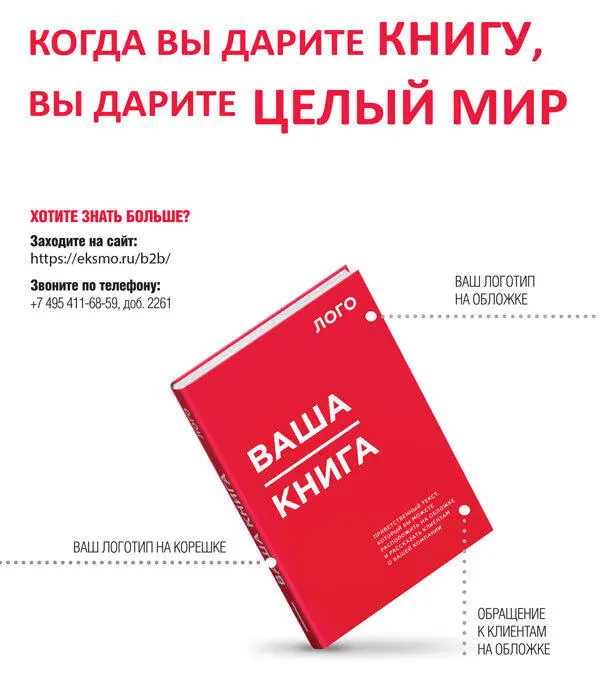
Примечания
1
Отчет за 2007 год Высшего Совета по образованию.
2
Так, 25 % детей имеют слабые навыки в чтении, письме и математике, а 15 % не достигают даже базовых знаний в этих фундаментальных областях.
3
Французская система школьного образования устроена довольно сложно. Для маленьких французов существуют ясли (crèche) — туда принимают детей с трех месяцев до трех лет. Потом дети идут в так называемую «материнскую школу» (école maternelle) — детский сад, в котором уделяется много внимания первичным образовательным и социальным навыкам. В ней дети обычно проводят три года:
1-й год — младшая группа (petite section),
2-й год — средняя группа (moyenne section),
3-й год — старшая группа (grande section).
К шести годам французский ребенок переходит в элементарную школу (école élémentaire), которая делится на:
подготовительный класс (cours préparatoire — CP),
начальный курс 1-го уровня (cours élémentaire niveaux 1 — CE1),
начальный курс 2-го уровня (cours élémentaire niveaux 2 — CE2),
средний курс 1-го уровня (cours moyen niveaux 1 — CM1),
средний курс 2-го уровня (cours moyen niveaux 2 — CM2).
Материнская школа и элементарная вместе составляют начальную школу (école primaire) и дают первичное образование. В 10 лет ученик переходит в систему среднего образования (enseignement secondaire), которое начинается с колледжа (collège). Классы в колледже считаются в обратном порядке, начиная с 6-го. (Прим. ред.).
4
Mattea Battaglia et Aurélie Collas, «Classement Pisa: la France championne des inégalités scolaires», Le Monde, 3 декабря 2013.
5
Больше практической информации на сайте www.celinealvarez.org
6
Жан Итар известен своей работой с Виктором, «диким ребенком из Авейрона» («Дикий ребенок из Авейрона» — французский ребенок, выросший в изоляции в дикой природе и обнаруженный людьми в 1800 году. Ученый и педагог Жан Итар (1774–1838) пытался, без особых успехов, вернуть ему навыки коммуникации и социальной жизни.)
7
Отрывок из отчета по анализу результатов, составленного ассоциацией «Agir pour l’école».
8
Вы можете посмотреть их на сайте www.celinealvarez.orgили на моей странице в YouTube.
9
Сours preparatoire — подготовительный курс, первый год элементарной школы.
10
Станислав Деан рассказал о первых результатах в своей лекции, прочитанной в Коллеж де Франс и доступной в Интернете «Apprentissage de la lecture: apport des sciences cognitives».
11
www.lamaternelledesenfants.wordpress.com
12
Эпигенетика (от древнегреческого эпи «над» и генетика ). Дисциплина, изучающая молекулярные механизмы, которые обусловливают выражение генетического наследия в зависимости от контекста.
13
Часто неправильно переведено на французский словом «обстановка, атмосфера».
14
Hart, B. & Risley, T. R. (2003), «The Early Catastrophe: The 30 Million Word Gap by Age 3», American Educator, стр. 4–9.
15
Snowling, M., Hulme, C. & Nash, H. M. et al. (2015), «The Foundations of Literacy Development in Children at Familial Risk of Dyslexia», Psychological Science, 26 (12), стр. 1877–1886.
16
Center on the Developing Child (2009), «Five Numbers to Remember About Early Childhood Development (Brief)».
17
Shlain, T. (2012), «Brain Power: From Neurons to Networks», TED Conferences, LLC.
18
Nelson, C. A., Zeanah, C. H., Fox, N. A., Marshall, P. J., Smyke, A. T. & Guthrie, D. (2007), «Cognitive Recovery in Socially Deprived Young Children: The Bucharest Early Intervention Project», Science, 318 (5858), стр. 1937–1940.
19
Pena, M., Werker, J.-F. & Dehaene-Lambertz, G. (2012), «Earlier Speech Exposure Does not Accelerate Speech Acquisition», Journal of Neuroscience, 32 (33), стр. 11159–11163.
20
Статья «Brain Architecture» доступна на сайте Center on the Developing Child Гарвардского университета.
21
Понятие поддержки дано Жеромом Брюнером, психологом развития, как «совокупность действий взрослого, помогающих ребенку научиться организовать свои усилия для самостоятельного решения проблемы, которую изначально он не мог решить».
22
Friederici, A. D., Mueller, J. & Oberecker, R. (2011), «Precursors to Natural Grammar Learning: Preliminary Evidence from 4-Month-Old Infants», PLoS ONE, 6 (3), e17920.
23
См. Yudhijit Bhattacharjee, «Les secrets du cerveau des bébés» (Тайны мозга ребенка), National Geographic, 16 сентября 2015 г.
24
Luo, Y., Kaufman, L. & Baillargeon, R. (2009), «Young Infants’ Reasoning About Events Involving Inert and Self-Propelled Objects», Cognitive Psychology, 58 (4), стр. 441–486; Stahl, A. E. & Feigenson, L. (2015), «Observing the Unexpected Enhances Infants’ Learning and Exploration», Science, 348 (6230), стр. 91–94.
25
Moore, M. K., Borton, R. & Darby, B. L. (1978), «Visual Tracking in Young Infants: Evidence for Object Identity or Object Permanence?», Journal of Experimental Child Psychology, 25 (2), стр. 183–198 Bower, T. G. R. (1978), Le Développement psychologique de la première enfance (Психологическое развитие начала жизни), Pierre Mardaga; Baillargeon, R., & Graber, M. (1987), «Where’s the rabbit? 5.5-month-old infants’ representation of the height of a hidden object», Cognitive Development, 2, стр. 375–392; Spelke, E. S., Breinlinger, K., Macomber, J., & Jacobson, K. (1992), «Origins of knowledge», Psychological Review, 99, p. 605–632; Munakata, Y., McClelland, J. L., Johnson, M. H. & Siegler, R. (1997), «Rethinking Infant Knowledge: Toward an Adaptative Process Account of Successes and Failures in Object Permanent Tasks», Psychological Review, 104 (4), стр. 686–713; Haith, M. (1998), «Who Put the Cog in Infant Cognition? Is Rich Interpretation too Costly?», Infant Behaviour and Development, 21, стр. 167–179; Meltzoff, A. N. & Moore, M. K. (1998), «Object Representation, Identity, and the Paradox of Early Permanence: Steps Toward a New Framework», Infant Behavior and Development, 21 (2), стр. 201–235. См. также книгу Элисон Гопник: Alison Gopnik (2005), Comment pensent les bébés (Как думают маленькие дети), Le Pommier, «Poche», стр. 101.
Читать дальшеИнтервал:
Закладка:


